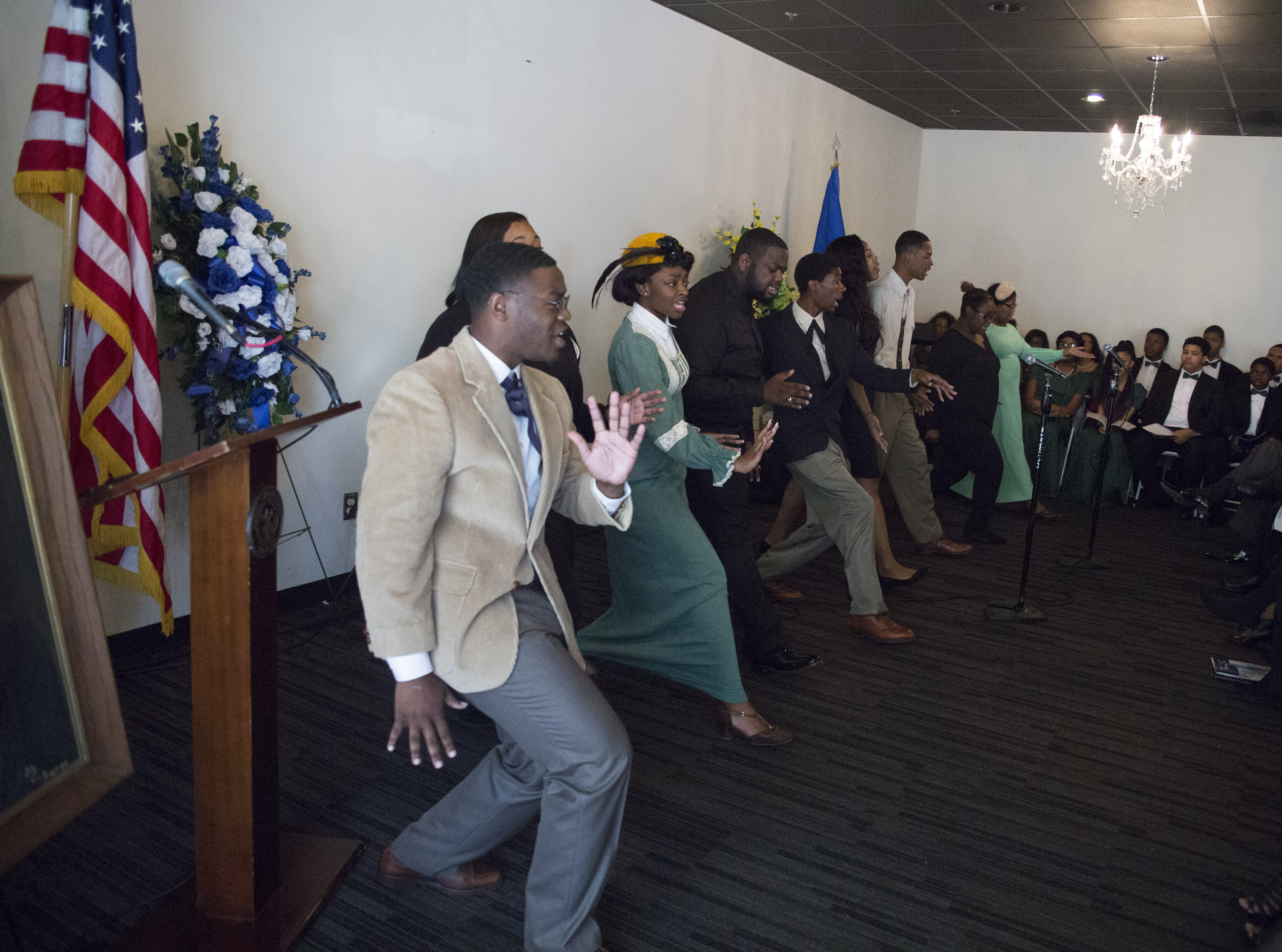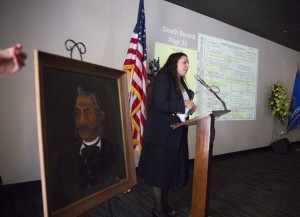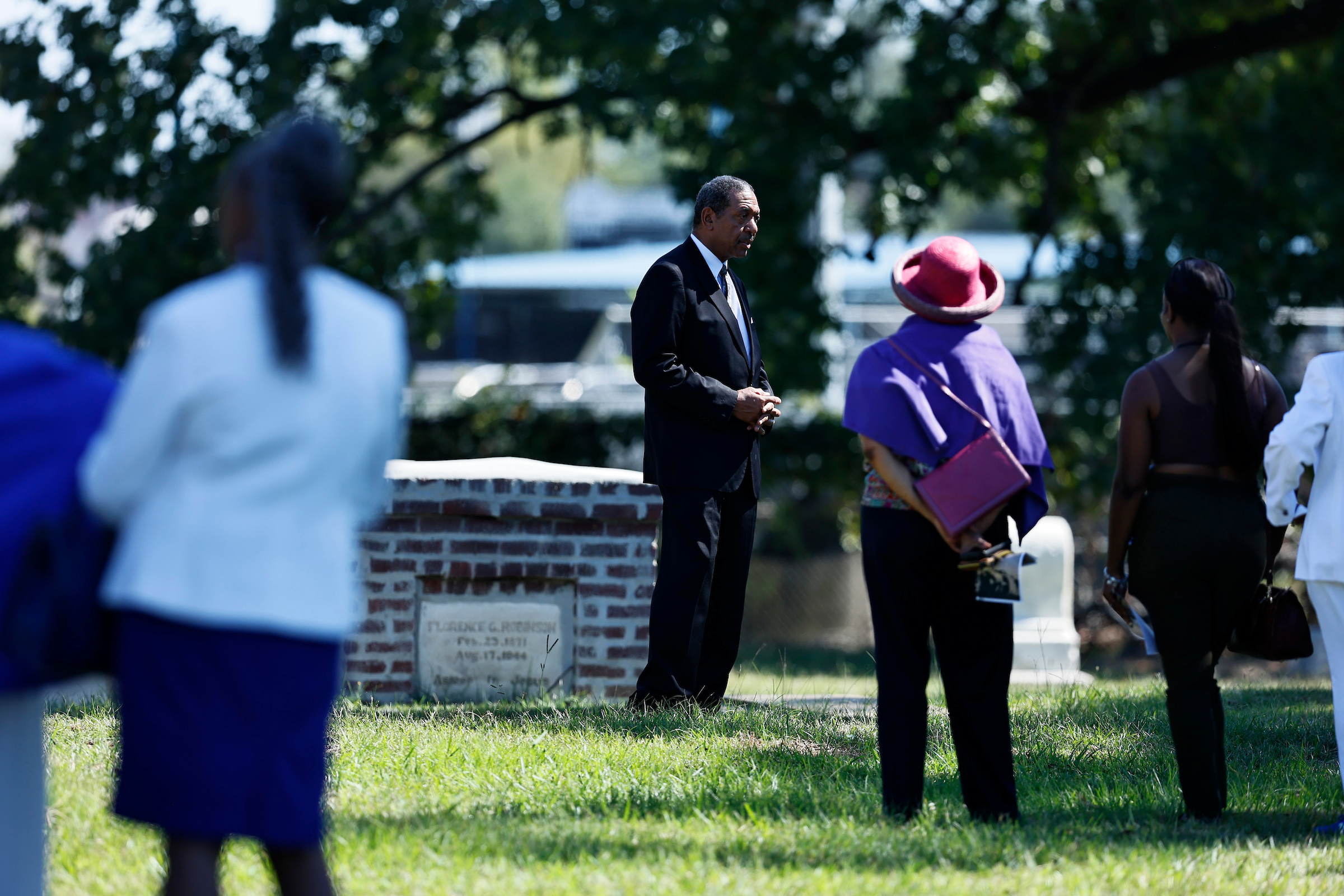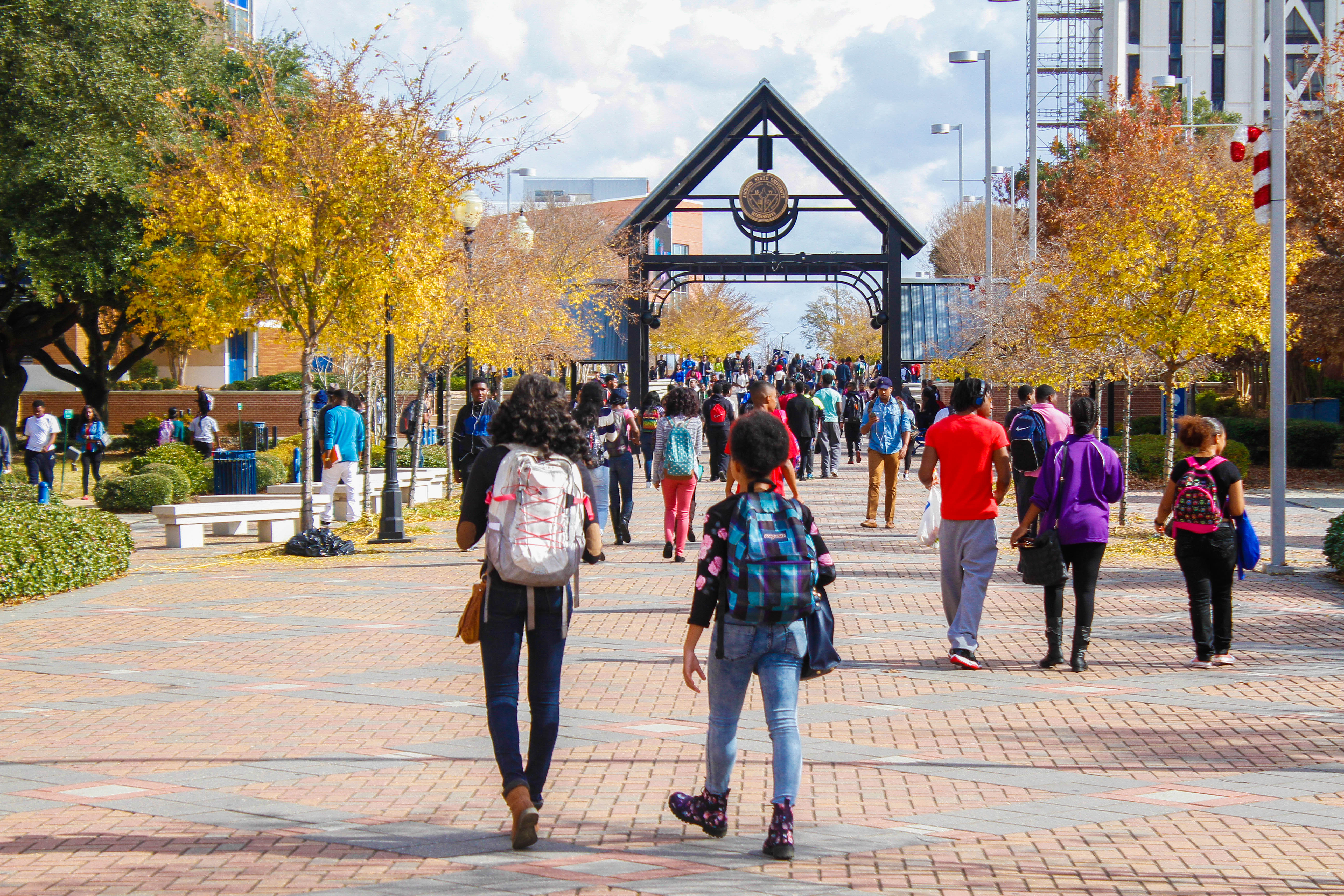
![]()
[hr]
The west Jackson community gathered inside the Amour on Jackson State’s campus to celebrate the restoration of two statues marking the graves of James “Jim” Hill and Ida Revels Redmond in the historic Mount Olive cemetery, one of the oldest private cemeteries for African Americans in the state of Mississippi.
Politicians and community activists joined JSU faculty, staff and students at an event that also was a nod to the state’s bicentennial. Other upcoming observances, too, will reflect on the culture and history of Mississippi, which was officially recognized on Dec. 10, 1817, as the 20th state in the union.
Mount Olive was established in the early 1800s to late 1900’s as a private plantation cemetery for African Americans and is a pivotal reminder of African American life during that era in Jackson, Mississippi.

Years ago as a JSU student, Heather Wilcox, who is now the neighborhood development assistant for JSU’s Center for University-Based Development, took interest in the cemetery’s history. She distinctly recalls walking by the graveyard wondering who was buried there and what historic value they contributed to their community.
“I wanted to research and document everything about Mt. Olive and once it began, the information became overwhelming but it also revealed itself. Learning that history and touching that history was extremely life changing,” Wilcox said.
The restoration event included an electronic unveiling of the two refurbished statues of Ida Revels Redmond and James “Jim” Hill. Ida Revels Redmond was the daughter of Hiram Revels, the first African-American to serve in the U.S. Congress to represent Mississippi in 1870 and 1871. James “Jim” Hill was a former slave who was elected as Mississippi’s Secretary of State from 1874-1878. In 1912, an elementary school located on Lynch Street was named in his honor. The school later transitioned into Jim Hill High School.
“Learning about Jim Hill and Ida Revels and seeing their statues erected and cleaned off was touching because I know that the people that built their statues in the 1800’s wanted us to remember who they were. We have these beautiful African American statues that we want to pay homage to and celebrate here in the West Jackson community”, Wilcox says.
During Wilcox’s presentation, she notes that the restoration of the statues was just the beginning of the beautification process to the historic site. She eventually plans to solicit additional money for a water wall that includes the names of each individual that lies in the gravesite as well as a stone gate entrance.
For more information about those buried in the cemetery and their notable contributions to the west Jackson community, visit www.jsums.edu/cubd or www.westjxn.com under the Mt. Olive Cemetery links.






